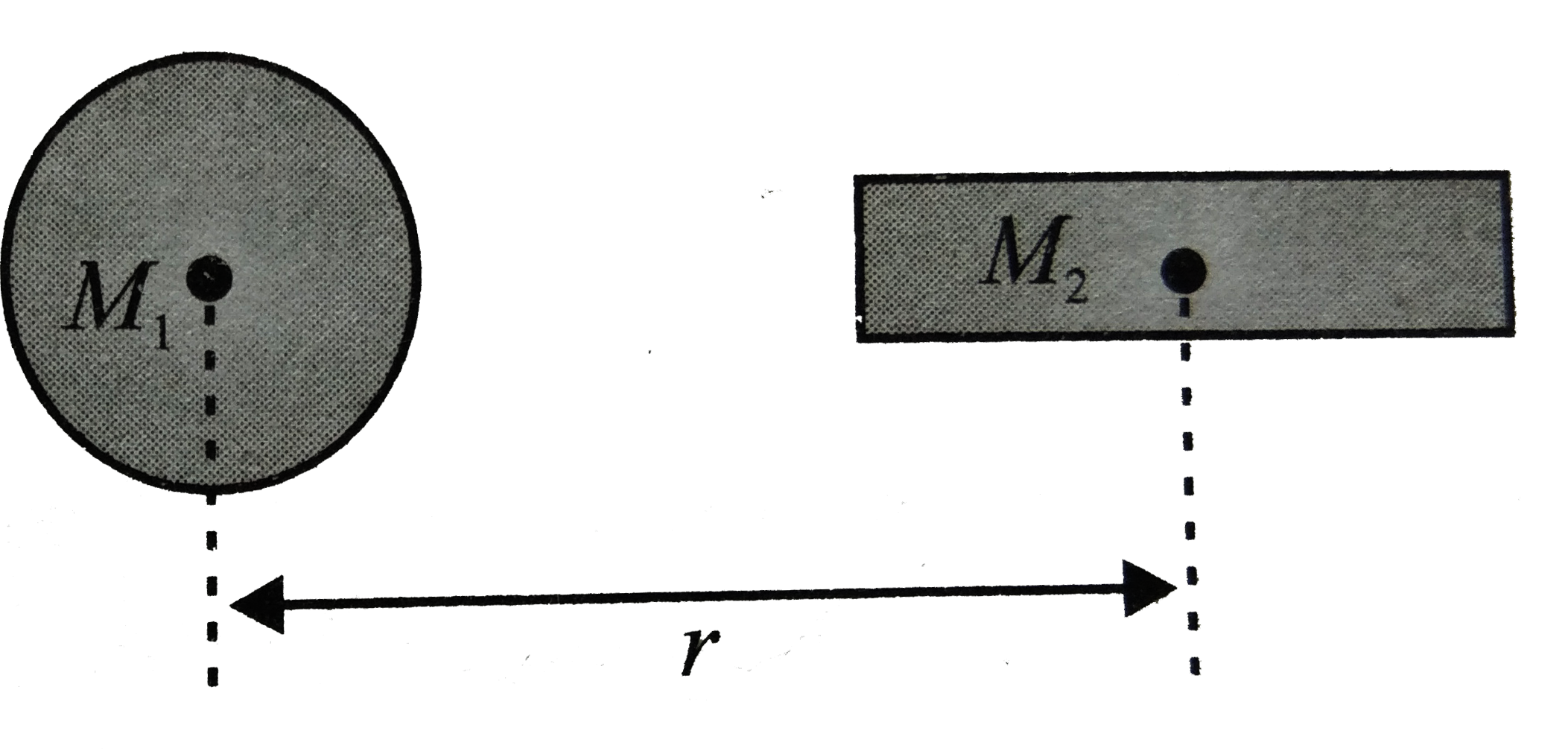F=Gm1m2r2 is valid
Between bodies with any shape
Between particles
Between any bodies with uniform density
Between any bodies with same shape
The correct Answer is:C
To determine the validity of the equation F=Gm1m2r2, we need to analyze the context in which this equation applies. This equation is known as Newton's Law of Universal Gravitation, which describes the gravitational force F between two masses m1 and m2 separated by a distance r.
1. Understanding the Equation:
- The equation states that the gravitational force F between two masses is directly proportional to the product of the two masses and inversely proportional to the square of the distance between them.
- Here, G is the gravitational constant.
2. Identifying the Applicability:
- The law applies universally to any two bodies in the universe, regardless of their shape, size, or composition.
- This means it is valid for both small and large bodies, celestial bodies (like planets and stars) and terrestrial bodies (like objects on Earth).
3. Evaluating the Options:
- Option 1: Between bodies with any shape - This is correct because the law applies to all shapes.
- Option 2: Between particles - This is too restrictive; while it applies to particles, it is not limited to them.
- Option 3: Between any bodies with uniform density - This is incorrect; the law does not require uniform density.
- Option 4: Between any bodies with the same shape - This is also incorrect; the law does not require bodies to have the same shape.
4. Conclusion:
- The correct answer is Option 1: The equation is valid for gravitational interaction between bodies of any shape.
- The equation states that the gravitational force F between two masses is directly proportional to the product of the two masses and inversely proportional to the square of the distance between them.
- Here, G is the gravitational constant.
- The law applies universally to any two bodies in the universe, regardless of their shape, size, or composition.
- This means it is valid for both small and large bodies, celestial bodies (like planets and stars) and terrestrial bodies (like objects on Earth).
- Option 1: Between bodies with any shape - This is correct because the law applies to all shapes.
- Option 2: Between particles - This is too restrictive; while it applies to particles, it is not limited to them.
- Option 3: Between any bodies with uniform density - This is incorrect; the law does not require uniform density.
- Option 4: Between any bodies with the same shape - This is also incorrect; the law does not require bodies to have the same shape.
- The correct answer is Option 1: The equation is valid for gravitational interaction between bodies of any shape.
Similar Questions
Assertion : Mass of the rod AB is m1 and of particle P is m2. Distance between centre of rod and particle is r. Then the gravitational force between the rod and the particle is
F=Gm1m2r2

Reason : The relation F=Gm1m2r2 can be applied directly only to find force between two particles.
View SolutionFind the dimensional formula of the following question :
(a) Surface tension T
(b) Universal constant of gravitation , G
(c ) Impulse ,J
(d) Torque τ
The equation involving these equations are :
T=FilF=Gm1m2r2,J=F×t and τ=F×1
View Solution
Knowledge Check
The gravitational force F between two masses m1andm2 separeted by a distance r is given by
F=Gm1m2r2
Where G is the universal gravitational constant. What are the dimensions of G ?AM−1L2T−3BM−1L3T−2CML3T−2DML2T−3
Assertion : The centres of two cubes of masses m1andm2 are separated by a distance r. The gravitational force between these two cubes will be Gm1m2r2
Reason : According to Newton's law of gravitation, gravitational force between two point masses m1andm2 separated by a distance r is Gm1m2r2.
View Solution∫∞rGm1m2r2dr is equal to
View SolutionFind Fnet=GMm[1r2+12r2+14r2+......up to ∞].
View SolutionStatement I: The force of gravitation between a sphere and a rod of mass M2 is =(GM1M2)/r.
Statement II: Newton's law of gravitation holds correct for point masses.

View SolutionIf f:R→R is defined by f(x)=1−x21+x2 then show that f(tanθ)=cos2θ.
View SolutionLet f(r)=2008∑j=21jr=12r+13r+….+12008r. Find ∞∑k=2f(k)
View SolutionTwo satellites A and B of masses m1 and m2(m1=2m2) are moving in circular orbits of radii r1 and r2(r1=4r2), respectively, around the earth. If their periods are TA and TB, then the ratio TA/TB is
View Solution